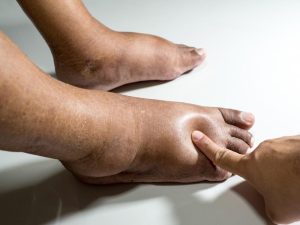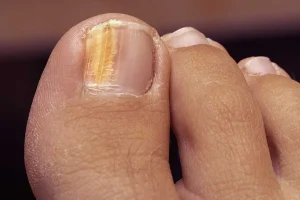Hammer toes are a common foot condition characterized by a bending of one or more toes at the middle joint, creating a hammer-like appearance. This deformity can cause discomfort and pain, especially when wearing shoes. For those living in Chicago, understanding the treatment options available—both surgical and non-surgical—is crucial in managing this condition effectively. In this blog post, we’ll explore the differences between these two approaches and when it might be appropriate to consider each.
Non-Surgical Treatments for Hammer Toes
Many patients with hammer toes can find relief through non-surgical methods. Here are some common non-invasive treatments:
1. Footwear Modification
Choosing the right shoes is often the first step in managing hammer toes. Here are some tips:
- Opt for Wide Shoes: Shoes with a roomy toe box can prevent further bending of the toes.
- Avoid High Heels: High-heeled shoes can exacerbate the condition by putting more pressure on the toes.
2. Orthotics and Inserts
Custom orthotics can provide support and cushioning, helping to alleviate pain and discomfort associated with hammer toes. Your podiatrist can evaluate your foot structure and recommend the right orthotics for your needs.
3. Physical Therapy
Physical therapy can help strengthen the muscles around the toes and improve flexibility. Exercises might include toe curls and stretching techniques that can alleviate symptoms and prevent further progression of the condition.
4. Padding and Taping
Using padding or cushions can help reduce pressure on the affected toes. Taping the toes in a more natural position can also provide temporary relief from discomfort.
5. Medications
Over-the-counter pain relievers such as ibuprofen or acetaminophen can help manage pain and inflammation. In some cases, your podiatrist might recommend corticosteroid injections for more severe discomfort.
Surgical Treatments for Hammer Toes
If non-surgical treatments do not provide sufficient relief, or if the hammer toe condition is severe, surgical intervention may be necessary. Here are common surgical options available in Chicago:
1. Tendon Release
This procedure involves cutting the tendon to allow the toe to straighten out. It is typically performed in less severe cases and can provide significant relief.
2. Osteotomy
In an osteotomy, the surgeon will cut the bone and reposition it to correct the toe’s alignment. This surgery is often recommended for more severe hammer toes.
3. Fusion
In cases where there is significant joint damage, fusion may be performed. This involves fusing the affected joint to eliminate movement and reduce pain.
4. Excision
In this procedure, the surgeon removes the bone deformity that is causing the hammer toe. This option can relieve pain and improve function.
When to Consider Each Treatment Option
The decision between surgical and non-surgical treatments for hammer toes depends on various factors:
- Severity of the Condition: Mild cases can often be managed with non-surgical treatments, while severe deformities may require surgery.
- Response to Conservative Treatments: If non-surgical methods fail to relieve symptoms after a reasonable period, surgery may be necessary.
- Overall Health: Your general health and any underlying medical conditions can influence the treatment approach. Your podiatrist will take these factors into account when recommending a treatment plan.
Expert Podiatrists in Chicago
If you’re experiencing symptoms of hammer toes, consult experienced podiatrists like Dr. Kelsey Krotiak, Dr. Asim Qureshi, Dr. Zane Qureshi, Dr. Kevin O’Connor, or Dr. Mohammad Usman at Michigan Avenue Podiatry. These board-certified specialists provide compassionate care and individualized treatment plans tailored to your specific needs.
Conclusion: Take Action for Better Foot Health
Hammer toes can significantly impact your quality of life, but understanding your treatment options is the first step towards relief. Whether you opt for non-surgical treatments or need to consider surgical options, our Chicago podiatrists are here to help. Don’t let hammer toes keep you from living your best life—schedule an appointment today to discuss your condition and explore the best treatment options for you!




